This is a Zeiss-Ikon Box Tengor 54/2, medium format 6×9 box camera, made by Zeiss-Ikon between the years of 1931 – 1938. This is the third version of the original Box-Tengor, featuring larger viewfinders and an updated design. The Zeiss-Ikon Box-Tengor was a higher quality box camera compared to inexpensive models made by Kodak and other companies. Featuring an all metal body, a higher quality doublet lens, adjustable apertures, and a shutter lock, it would have been considered a top of the line box camera for those looking for box camera simplicity, but better images. The Box-Tengor lineup continued after World War II and stayed in production until 1956.
Film Type: 120 Roll Film (eight 6cm x 9cm exposures per roll)
Lens: f/11 Goerz Frontar Achromat uncoated 2-elements
Focus: 1 meter to Infinity in three selectable groups, 1-2 meter, 2-8 meter, and 8m to Infinity
Viewfinder: Twin Brilliant, one each for Landscape or Portrait orientation
Shutter: Spring Tensioned Metal Blade
Speeds: T, and I (~1/30 second)
Exposure Meter: None
Battery: None
Flash Mount: None
Weight: 539 grams
Manual: http://www.cameramanuals.org/zeiss_ikon/zeiss_ikon_box-tengor.pdf
How these ratings work |
The Zeiss-Ikon Box Tengor was a well made and high quality box camera originally produced by Goerz and continued after it’s merger into Zeiss-Ikon. Featuring an all metal body, doublet lens, adjustable focus, adjustable f/stops, a threaded shutter release, a shutter release lock, and large and bright viewfinders, this was one of the highest end box cameras of it’s day and still a capable shooter today. The Box-Tengor was produced over the course of nearly 30 years, and all are desirable by collectors, so if you ever have a chance to pick one up at a reasonable price, I highly recommend it! | ||||||
| Images | Handling | Features | Viewfinder | Feel & Beauty | History | Age | |
| 1 | 1 | 2 | 1 | 2 | 0 | 40% | |
| Bonus | none | ||||||
| Final Score | 9.8 | ||||||
History
The history of the camera industry is heavily centered in Germany during the earliest parts of the 20 century. Companies like Voigtländer, Zeiss, Leitz, and Deckel all pioneered designs that would further the progress of the optics and camera industries worldwide.
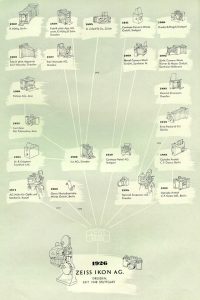
For as successful as these early companies were, the first world war had a sizable negative effect on pretty much all German industry and set the economy into a depression of sorts which saw many early companies disappear or merge in with others. Perhaps one of the largest such mergers occurred in 1926 when four different Dresden based camera makers would all merge together with an infusion of capital from the Carl Zeiss Foundation to form an all new company, known as Zeiss-Ikon. The four companies that would make up this new company were Contessa-Nettel AG, Ernemann, Goerz, and ICA (who themselves were a previous merger of 4 different companies). Of those 4 companies, the one I want to focus on for this article is Goerz, or C. P. Goerz

Goerz was founded in 1886 by Carl Paul Goerz, a former salesman who worked for a German camera maker named Emil Busch AG. Goerz quickly established himself as a quality lens maker and in after only 2 years in operation, took over the workshop of another German lens company and eventually became known as Optische Anstalt C. P. Goerz. In a short amount of time, Goerz was producing at least a dozen different lens designs, from simple single element lenses all the way to their top of the line 6-element Goerz Dagor.
At this time, Goerz was quite successful and by 1914 had over 3000 employees and was considered by Zeiss to be one of their biggest rivals in the manufacture of optical lenses. Beyond lenses, Goerz was also an accomplished camera maker with everything from simple box cameras to roll film and plate cameras. Goerz had an exclusive license to use an early focal plane shutter developed by Ottomar Anschütz. Simply called Anschütz shutters, these roller shutters had a top speed of 1/1000 second which was blazing fast for the time.
Like many early German companies, Goerz produced a large number of cameras, but most of their designs could be grouped together into one of three categories. Folding and box cameras with focal plane Anschütz shutters were usually called “Ango” cameras, where Ango is a combination of both Anschütz and Goerz.
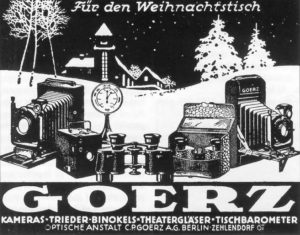
Medium to high end folding roll film and plate cameras were usually called Tenax such as the Taro Tenax or Vest Pocket Tenax. These cameras all had leaf shutters, and came with the widest variety of Goerz lenses, all the way up to the top of the line Dagor.
Finally, the most basic cameras all had the Tengor label. In this category were simple box and folding cameras with simple shutters and single or double element lenses.
In 1924, Goerz released a simple medium format box camera called the Box Tengor. This new camera would have a Frontar Doublet lens, a single speed shutter and were made entirely of metal. During the 1920s, photography was becoming increasingly affordable by non-professional photographers, so simple box cameras like the Box-Tengor and others made by Kodak and dozens of other companies were hot commodities.
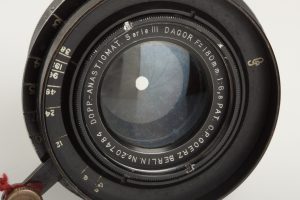
C.P. Goerz would die in 1923 and with the pressures of the poor German economy and an over saturation of competition, Goerz was on the verge of bankruptcy. After an initial attempt to sell the company to Kodak, the company agreed to become one of the four companies to merge with Zeiss and become Zeiss-Ikon. As they did with other pre-merger companies, most of Goerz’s staff and personnel were absorbed by other Zeiss-Ikon entities, but a few products continued to be produced under their own name. Although initially discontinued, the Dagor name was brought back as the Zeiss-Ikon Goerz Dagor in 1932 and offered in a variety of sizes and speeds. In addition to the Dagor, Zeiss kept the Box-Tengor, and would eventually reuse the “Tenax” name in a future line of cameras.
The Zeiss-Ikon Box Tengor was available in a couple of different sizes. The smallest was the “Baby Box Tengor” which took 3×4 images on 127 roll film, 6×4.5 and 6×9 on 120 roll film, and 6.5×11 on 116 roll film, and would remain in production until at least 1956. During this time, it would see some cosmetic changes, but the same basic premise of an all metal box camera with doublet lens and a single speed shutter remained.
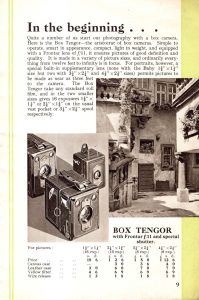
Box cameras would remain popular as entry level photographic tools throughout the first half of the 20th century. I can only assume that the “Zeiss-Ikon” name and German reputation of the camera meant it was seen as a premium option to more basic Kodak and ANSCO box cameras of the day.
The image to the right is from Zeiss-Ikon’s 1938 product catalog and lists the various sizes and prices that the camera was available in at the time. Converting historical currencies into modern ones can be extremely difficult, but according to the currency converter at the UK’s national archives website, the price of 1 pound and 5 shillings for the 6×9 version of the Box Tengor, is equal to somewhere between 49 and 63 pounds (it only lets you select 1935 or 1940, but not 1938). And then if I use a modern currency converter, these prices in US dollars compared to $64 – $82 which I guess makes sense for an inexpensive entry level camera.
Today, there aren’t a whole lot of box cameras that excite most collectors. Kodak Brownies have their place in history and when used correctly can actually be quite fun, but if there was ever a box camera that you could call desirable, the Box-Tengor is it. Later variants came with a pretty stainless steel finish, but even the black painted one being reviewed here is quite attractive. As is the case with pretty much every box camera, the simple design of the shutter means that they almost always work. If you can find one of these things in anything close to good condition, I think it’s a worthy addition to any collection.
My Thoughts
A box camera is a box camera is a box camera, right? I mean, how many ways can you take a box, put a simple lens on it and roll some film inside of it? While this sentiment is probably true for most box cameras, if the Germans know one thing well, its taking a simple concept and making it complicated.
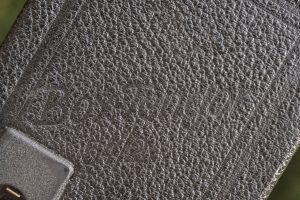
In my review for the Certo Doppel-Box, I showed how the simple idea of a box camera can be upgraded with closeup filters, dual range focus, switchable 6×9 and 6×4.5 masks, and an adjustable aperture. The Zeiss-Ikon Box-Tengor doesn’t quite have the complexity of the Doppel-Box’s internally moving mask, but it also has an adjustable aperture mask, THREE focus ranges, and a threaded shutter release!
Like the Certo Doppel-Box, the Box-Tengor is made entirely of metal. There is no cardboard or wood here, its all sturdy metal covered in a fairly durable body covering. It doesn’t have the feel of leather, and this camera predates the widespread use of vinyl, so I don’t really know what it is, but on the entire body of the camera, it was in excellent condition with only the slightest hint at peeling.
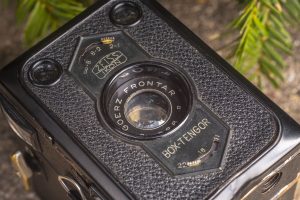
Using the camera is much like other box cameras, but just a little bit nicer. On the face of the camera above the taking lens is the focus selector. There are three settings with indicated distances in meters, Infinity to 8m, 8m to 2m, and 2m to 1m. Unlike most focusing cameras, changing this setting does not move the taking lens, but rather internally moves one of two different closeup lenses in front of the taking lens for the 8m to 2m and 2m to 1m setting. At the Infinity to 8m setting, there is no filter at all.
Below the taking lens are aperture settings for f/22, f/16, and f/11. Like most box cameras, there is no traditional iris, but instead is a metal plate with one of three sizes of holes. At f/11, all of the light coming through the front lens exposes the film, but at f/16 and f/22, a smaller hole partially blocks the light path, effectively “stopping down” the lens.
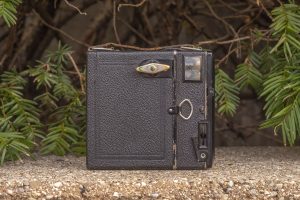
On the camera’s right side is the landscape viewfinder which in this example was large and bright. Although I don’t show it, there is a second viewfinder for portrait orientation on top of the camera, near the handle. Behind it is the large and easy to use film winding key. Unlike many Kodak box cameras that require you to pull this key out to open the camera, the key remains fixed to the body when loading or unloading.
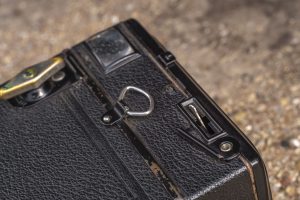
Next to the viewfinder is a pull out lever with the letter “T” on it. Despite what it says, the “T” lever does not function in “Timed” mode like on many cameras, but actually works more like “Bulb” mode in which the shutter only remains open as long as you hold the shutter release knob. You can still shoot the camera in Timed mode, but only in conjunction of the next two options.
Near the bottom is the shutter release lever, a sliding catch for holding the shutter release down (for Timed shots), and a threaded hole for a shutter release. With a shutter release cable, you can fire the shutter in instant or Timed mode, holding the shutter cable down as long as you need it open, or by using a lock on the shutter release cable itself, you can keep the shutter open indefinitely, or optionally, by using the metal slider to prevent the shutter from closing. This level of flexibility is very uncommon for a box camera and is one of it’s coolest features.

The back of the camera has a nice “Box Tengor 54/2” logo embossed into the body covering and a red window with sliding door for monitoring your film’s exposure numbers. There is no sort of double exposure prevention or over-wind protection, so you need to use this window for every exposure. Using the door is also a good idea when using modern films as many of the red windows on early 20th century cameras let in too much light for modern high speed films so you should be careful to only open the door in subdued light.
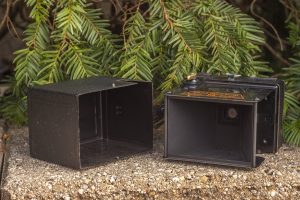
Loading film into the camera requires separating it into two parts. The entire film compartment is permanently connected to the front of the camera, and the back of the camera is a removable shroud that can be pulled off by releasing a catch on side of the camera near the landscape viewfinder.
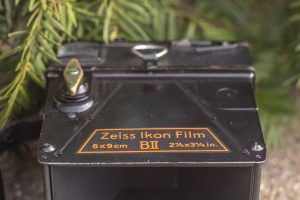
With the film compartment out, loading in a new roll of film is incredibly easy. An empty take up spool should be connected to the film winding key, and the supply spool goes on the opposite side. Despite what the orange label says, you do not need “Zeiss Ikon BII Film”, any 120 format film will work. Stretch the film leader across the entire film compartment and make sure the end of the leader is securely attached to the take up spool, and then slide the entire film compartment back into the metal case. Pay special attention to the little notch in the case that goes around the film winding key. On my example, I struggled a bit getting it to lineup properly. If you struggle to get the case on to the point where you can secure the catch on the side of the camera, it is likely this is your problem area.
The Box Tengor is a nicely featured and well built camera. You could say it’s the “Zeiss” of box cameras, and that’s a name it wears proudly. If you’ve only ever experienced entry level Kodak or ANSCO box cameras, you owe it to yourself to try out a Box Tengor.
My Results
For my first roll through the Box Tengor, I chose a roll of fresh Kodak Portra 160. I generally have good luck with this film and find that it has a very wide latitude, and should be flexible enough to work within the box camera’s single shutter speed. I figured that if I was in bright light, I could stop it down all the way to f/22 and if I needed to shoot it in shade or on an overcast day, I’d pick f/11.
Fun Fact: The film I shot in the Box-Tengor was the same strip I featured in a video I created showing how to develop C41 color film at home. When I made this video, I had intended on creating a whole post about developing your own film, but that hasn’t happened yet. Nevertheless, now that the review is live, it might be interesting to see how these very images came to be. Click the link above if you’re interested in developing your own film.
I really enjoyed my time with the Box Tengor and I never got that feeling of complete fragility like I often get with card board box cameras from the early 20th century. The all metal feel of the camera inspires confidence that a slight bump or a single drop of rain won’t ruin the fragile design of the camera. This allowed me to carry the camera into shooting scenarios I likely wouldn’t have ventured to with a simpler camera.
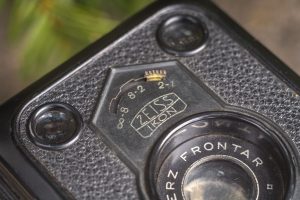
While I was generally pleased with what I thought would be 8 excellent exposures, after developing the film and looking at my negatives, I was disappointed to see about half the roll was strangely out of focus. The first four images in the gallery above look pretty good, but look at the fifth image, of the old house. Although I am certain I had the camera at the infinity setting, and Im easily standing more than 20 meters away from that house, almost nothing is in focus. Even if I was off by a little bit, the depth of field of the small apertures used in this camera should have easily compensated.
I can only assume there’s some defect in the camera that is keeping the film plane slightly off spec. After all, it’s not like I was attempting close up macro shots with this. I never attempted a single shot at the camera’s 1 meter minimum focus distance.
Defect or photographer failure, I still feel pretty confident that in the right hands, a good working Box Tengor is quite a capable camera. It’s doublet lens is capable of reasonably sharp images with the right amount of sharpness fall off and vignetting near the corners to give you an unmistakably vintage image. Box cameras are one of those things that to the modern photographer are the exact opposite of what full frame 45+ megapixel digital mirrorless cameras promise. Their simplicity almost defies logic, but they do work, and in the right hands, do just as good of a job.
Related Posts You Might Enjoy
External Links
http://camera-wiki.org/wiki/Box_Tengor
http://kohlweb.com/essays/2017/10/zeiss-ikon-box-tengor/
https://www.pacificrimcamera.com/pp/ziboxtengor45pg.htm
http://www.camarassinfronteras.com/articulos/box_tengor/serie_box_tengor.html (in Spanish)
http://www.marcocavina.com/articoli_fotografici/Pierpaolo_Ghisetti/38/00_pag.htm (in Italian)

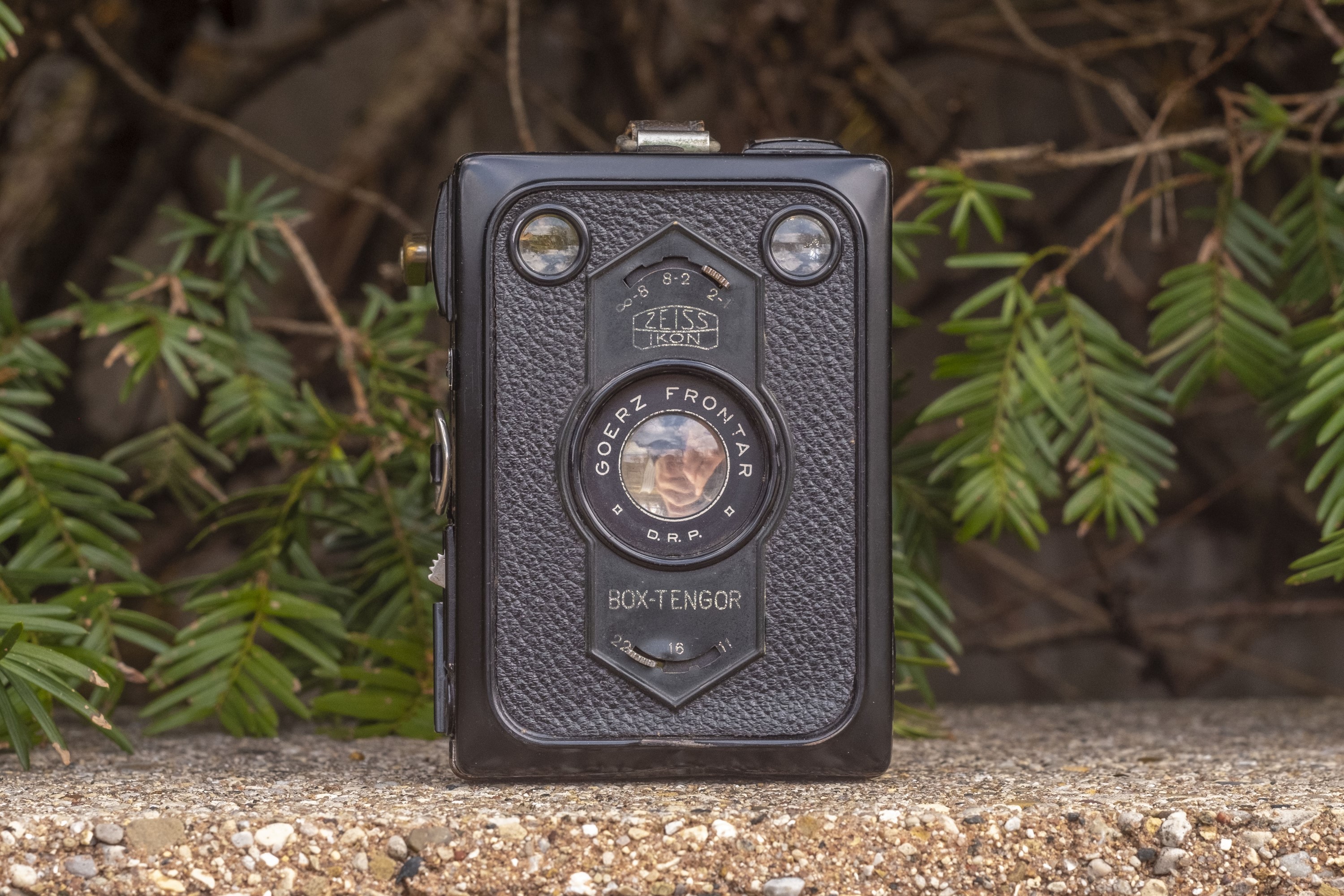
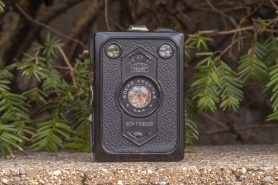
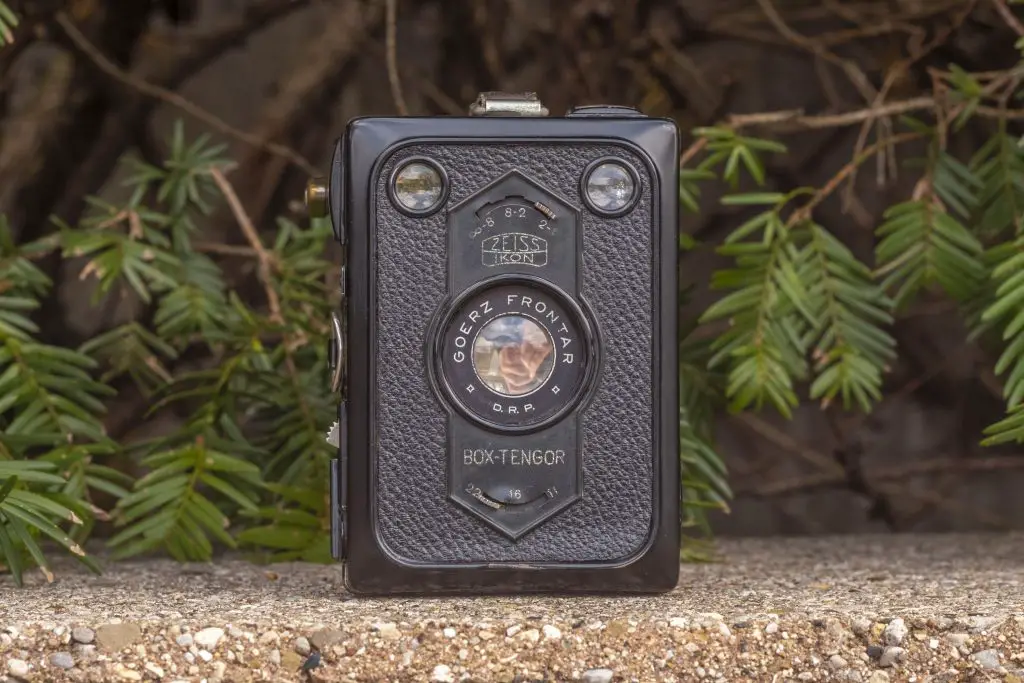





That’s some pretty wicked vignetting from that sturdy box.
Very well presented, Mike.
Now you got me wondering how much different the photography world would have been, if Kodak had purchased Goerz instead of Nagel Werk!
One of the great lens makers! I have an 8.25, 9.5, and 12 inch Goerz Red-Dot Artars in Compur shutters that I refuse to get rid of…all beautiful lenses for view camera product photography. I have my eye on finder the best quality Box Tengor I can find and then use it for the rest of my life!
I’m curious, have you read that the lens is a doublet with two elements? I have this same era Box Tengor 54/2 and the lens only shows two reflections. Also the photo of the McDonalds shows a lot of transverse (lateral) chromatic aberration which looks more like a single element lens to me.
I did see somewhere that the Box Tengor was a doublet, but I did not disassemble it to be sure. If you find conclusive evidence otherwise, let me know and I can update the review.
Regarding focus on Zeiss Tengor Boxes: I tested my 54/2 with a hair across the film plane and a 50mm SLR pointed through the lens. The infinity setting seems to focus at about 5m while the middle distance setting has focus at infinity. Thus, using the settings in reverse, middle for distance and infinity for middle distance, produces sharp images. Ymmv of course and who knows why this is, anyway it’s worth checking the lenses for collimation.